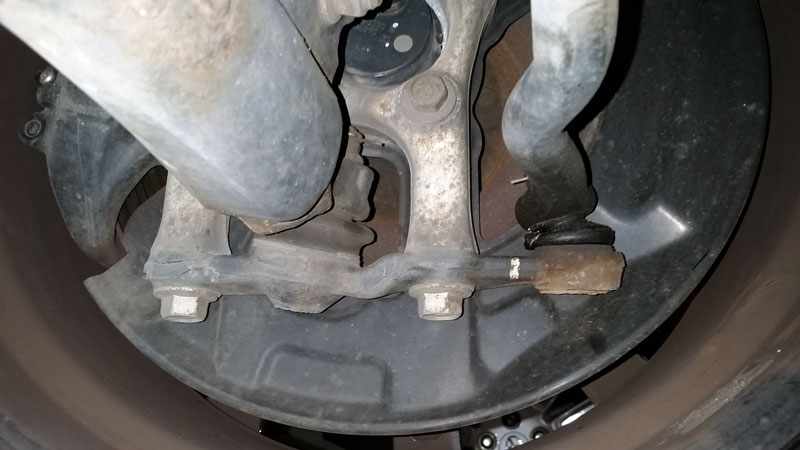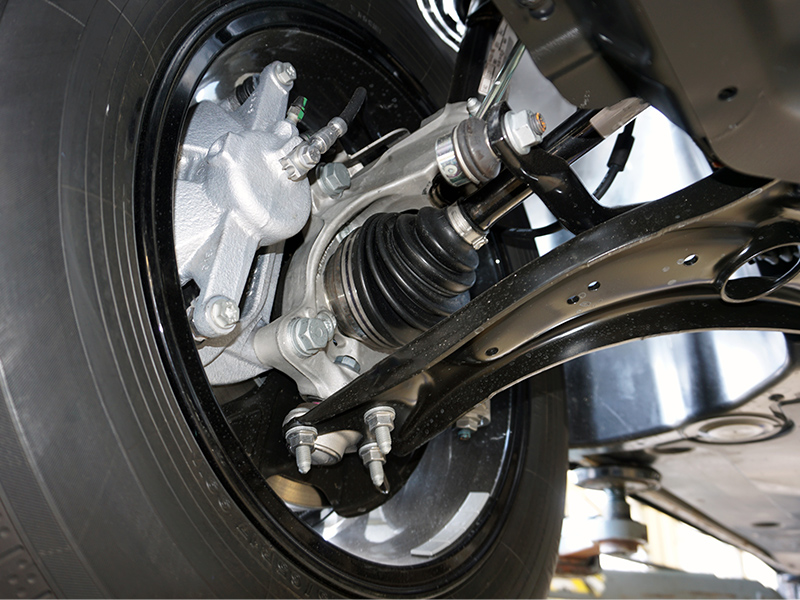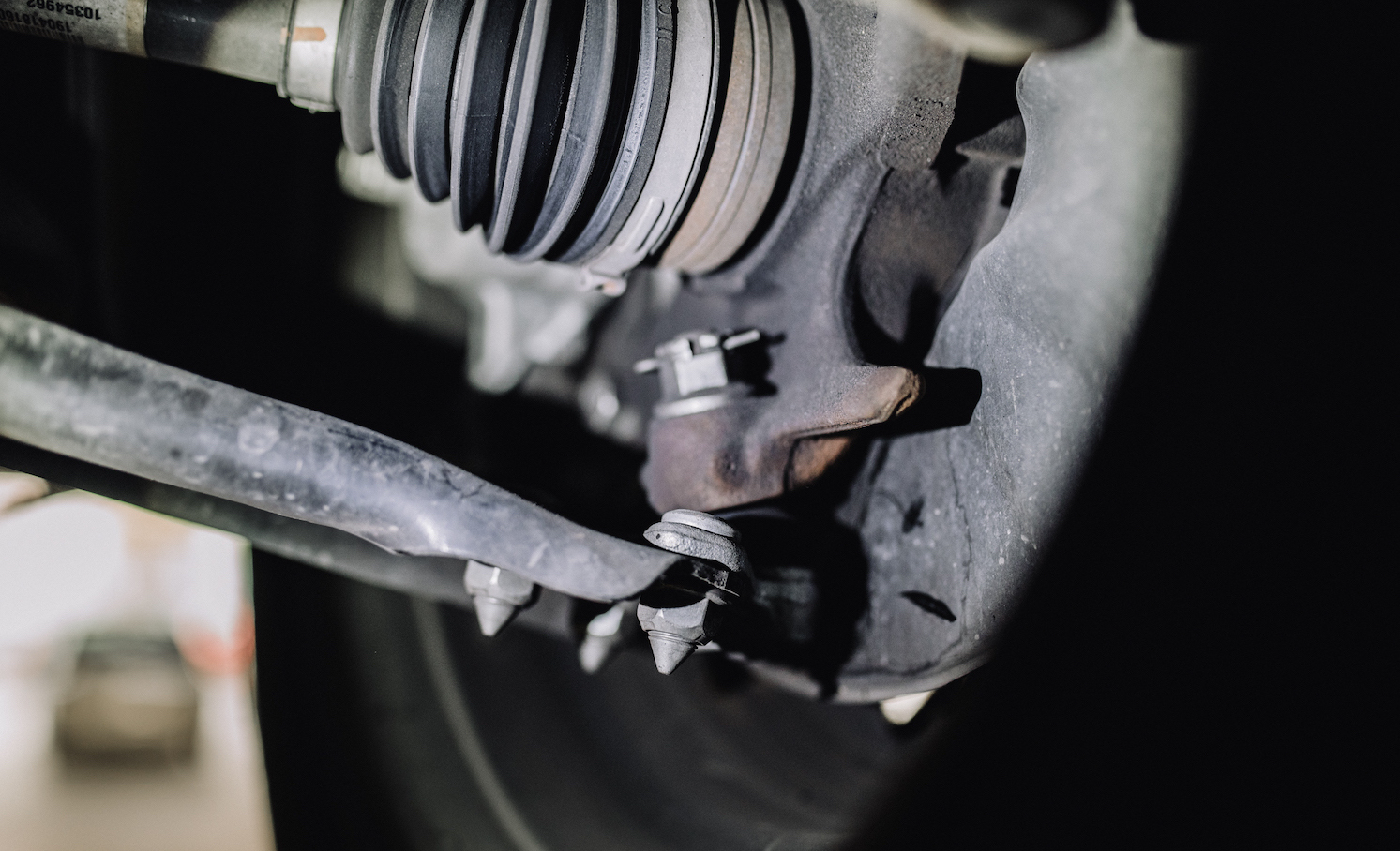Your vehicle’s suspension system comprises several moving parts and each must work correctly to get the job done get your car moving. These parts are interconnected through ball joints.
Table of Contents
These ball joints are a component of the car’s front suspension that involves a complex assembly of joints, links, bearings, and bushings, allowing front wheels to make movements independently. This system features an array of shock-absorbing components enabling enhanced handling and support of the vehicle, especially when it’s on the road.
Ball joints are an essential part of a suspension because they assist the suspension system and steering system. Hence, it’s crucial to keep them in good condition.
The front ball joints car undergo tear and wear with time. Therefore, it is crucial to identify the worn ball joint signs, especially when the front ball joints aren’t performing properly. When you notice any issue with worn ball joints, it’s advisable to replace them.
Do you know that ball joints need to be replaced in pairs? Stay tuned for more valuable information, details about ball joints, function, and when to replace them. Let’s begin with the basics.
What Are Ball Joints?
In simpler terms, ball joints act as hinges that connect the vehicle’s suspension control arms with the steering wheel knuckles or spindles through a spherical, rotating socket. As a result, the wheel of the motor car performs a wide range of movements. It allows the wheels to move side to side or up and down over speed bumps.
During the entire motion of the suspension, ball joints maximize the tire’s contact with the road to deliver optimal vehicle control and tire wear. Without a doubt, ball joints are a crucial part of the front suspension system connecting different links allowing easy movement.
What Are The Types Of Ball Joints?
Depending on the type of suspension system, most cars have separate upper ball joints and lower ball joints.
Lower ball joints are larger and tend to show wear faster. It’s mainly because they carry the weight of the front car. On the contrary, upper ball joints are non-load bearing and last somewhat longer.
Besides this, some vehicles, usually those with strut suspensions, have just lower ball joints. Furthermore, some vehicles also do include rear ball joints.
What Do Ball Joints Do?
As the name suggests, these clever ball and sockets act as a pivot made up of a bearing stud and socket fitting snuggly inside the lubricated casing and covered with a dust boot.
Car ball joints connect front wheels with the suspension system. The ball and socket work perfectly together to provide pivoting movement between control arms and steering knuckle, delivering a smooth and safe ride. It also helps the driver to precisely control the vehicle.

How Do Ball Joints Work In A Vehicle?
Certainly, the ball joint features a stud that allows rotation within the housing and a socket. This ball stud is what keeps the motor vehicle constantly moving when you are driving on the road.
Ball joints allow the steering wheels knuckles to move in different directions, but at the same time, it ensures connection with the vehicle. This motion helps the car’s wheels move side to side or up and down, as needed.
How To Tell If Ball Joints Are Bad?
Every ball joint needs periodic greasing, usually done during the oil change. When ball joint wear, they allow too much suspension movement. They tend to show signs of damage such as:
- Shakes or shimmies even during driving on a smooth road.
- Steering wheels wandering, shaky, or loose
- Uneven tire wear
- Squeaking and clucking noise
- Vehicle drifting to the side itself
- Premature tire weathering
- Excessive vibration
- Knocking noise when the car drives over speed bumps
A worn ball joint is not a problem that should be ignored and it needs to be addressed asap. If the wear worsens or is severe, the stud could separate from the housing and you could instantly lose control of your vehicle.
What Causes Ball Joints To Go Bad?
Given the role ball joints play in the vehicle’s suspension system, ball joints will sometimes experience daily joint ball wear and worn out. There will be a need to replace them at some point in the vehicle’s life.
The primary cause of a bad ball joint is dirt, grit, and grime. Certainly, the bottom area of vehicles is primarily exposed to oil, salt, grime, and other relevant dirt particles on the road. This filth makes its way to the ball joint, causing loss of lubrication. As a result, rust starts to find its place leading to the deterioration of the joint and further worsening it.
The general wear and tear accelerates and damages the car suspension. In other words, the constant movement of the ball stud causes it to become loose ball joints resulting in motion inside the socket. As the ball joint wears out, more space develops between the socket and stud. This causes several issues and risks to life, resulting in partially dysconnectivity.
This is precisely when the ball joint gets worn out because excessive dislocation and usage go beyond the manufacturer’s specifications. This clearly indicates that one must look for a ball joint replacement without further ado.
How To Check Worn Ball Joints?
When you suspect a ball joint wear, the vehicle needs to be inspected as soon as possible. Indeed, the symptoms of worn ball joints don’t show immediately and it might take longer to diagnose. Once you have noticed the signs highlighted above, don’t waste even a minute.
Ball joint replacement is not as easy as it might seem. It’s pretty tricky to access and install due to the presence of rust. Certainly, some cars are so complex that their ball joint is integrated into the control arm. It’s always advisable to double-check your ball joints. However, it’s best to check it during driving than visual inspection.
How To Check A Worn Ball Joint When Driving
Now, let’s move towards the central part, checking worn ball joints. To find out whether your ball joints are damaged while driving your vehicle is as simple as these 3 steps:
- Speed Limit Check
Drive your vehicle on the road paying close attention to the engine, steering, and overall performance of the car at speed limit areas of the road.
Here, one must check for vibrations that can easily be felt through the floor or steering wheel. When the ball joint wears out, it tends to make these vibrations, so it’s relatively easy to identify. Also, sometimes, the car’s wheel wanders left or right, this occurs because the worn ball joint causes the steering knuckles to pull on their own.
- Speed Bum Check
Once you have checked your ball joint on speed limit areas, it’s time to check it on speed bumps by driving at a slow speed. To identify whether your ball joint has worn out, stop and go over the speed bump a couple of times and turn a few times.
Closely examine your ball joint housing during this checkup. A speaking or clucking noise usually denotes a worn ball joint. The clucking noise is due to the worn ball joints rattling. As soon as the suspension makes any movement, the rubber boot responsible for protecting the grease fitting inside the ball joint tends to make a squeaking noise. These noises tend to get louder as more worn ball joints become.
- Turning The Steering Wheel Check
This is the last step to check the upper ball joint or lower control arm. Here one must part the car and turn the steering wheel back and forth a couple of times. Keep your ears on any noise coming from the ball joints.

How To Check A Worn Ball Joint Visually
A visual and physical inspection is excellent, but for it, one needs to have these tools:
- Jack stands
- Lug nut wrench
- Wheel chocks or any other wooden block
- Pry bar
- Flashlight
Now let’s discuss the process of checking worn ball joints through a physical inspection:
- Check Tire Wear Status
The loose ball joints don’t have the power to align your vehicle’s suspension system during drive resulting in accelerated tire wear. This is because the rubber tread starts touching the road or ground differently. If your tires have feathering or wear indicators, your ball joints need to be checked by a professional. Moreover, you should also check for the front car wheel points known as the toe-out.
Pro tip: If the tire wear is equal on both sides of the vehicle, thankfully, it’s not worn ball joints rather under-inflation of the tire.
- Loosen The Lug Nuts
Now lose the lug nuts to gain control to turn the steering wheel around on its axis without removing it entirely.
- Jack Up The Vehicle
Jack the front car and secure it on the jack stand. Don’t forget to place wheel clocks behind the wheels to prevent the motor car from rolling. This will ease the process of visually inspecting the worn ball joints.
- Rock The Tire On Its Own Axis
Once the car is jacked up properly, grip the front and bottom tire and start rocking it along the wheel’s axis. There should be no play in this movement if your ball joints are in proper condition.
But closely examine the noise coming from the top and bottom tires. When the lower control arm or ball joint is damaged, it will get loud. Similarly, one needs to check the upper control arm and upper ball joint for any noise.
- Remove The Front Wheel
Simply remove them and visually check the upper control arm and lower ball joint with a flashlight. There should be no wear indicators such as rusk, dirt, grease leakage, etc.
- Pry The Ball Joint Apart
Separate the lower control arm and the steering knuckle using the pry bar.
- Place the Wheels Back
Once you are satisfied with no signs of worn ball joint, it’s time to replace the wheel, lower the vehicle, and torque the lug nuts.
- Repeat
After you have checked the first wheel, it’s time to inspect the other three.
Final Thoughts Of How To Check Ball Joints
In a nutshell, ball joints are an essential component of the front suspension that bears the weight of the front car. With time, grime from the road can result in the wear of the ball joint.
When you suspect a worn ball joint, you should have your vehicle checked by a professional mechanic who has experience with diagnosing suspension problems. Make sure to get quality ball joints to ensure a longer lifespan. If you are struggling with checking your worn ball joints, then seeking professional advice is the way forward.

